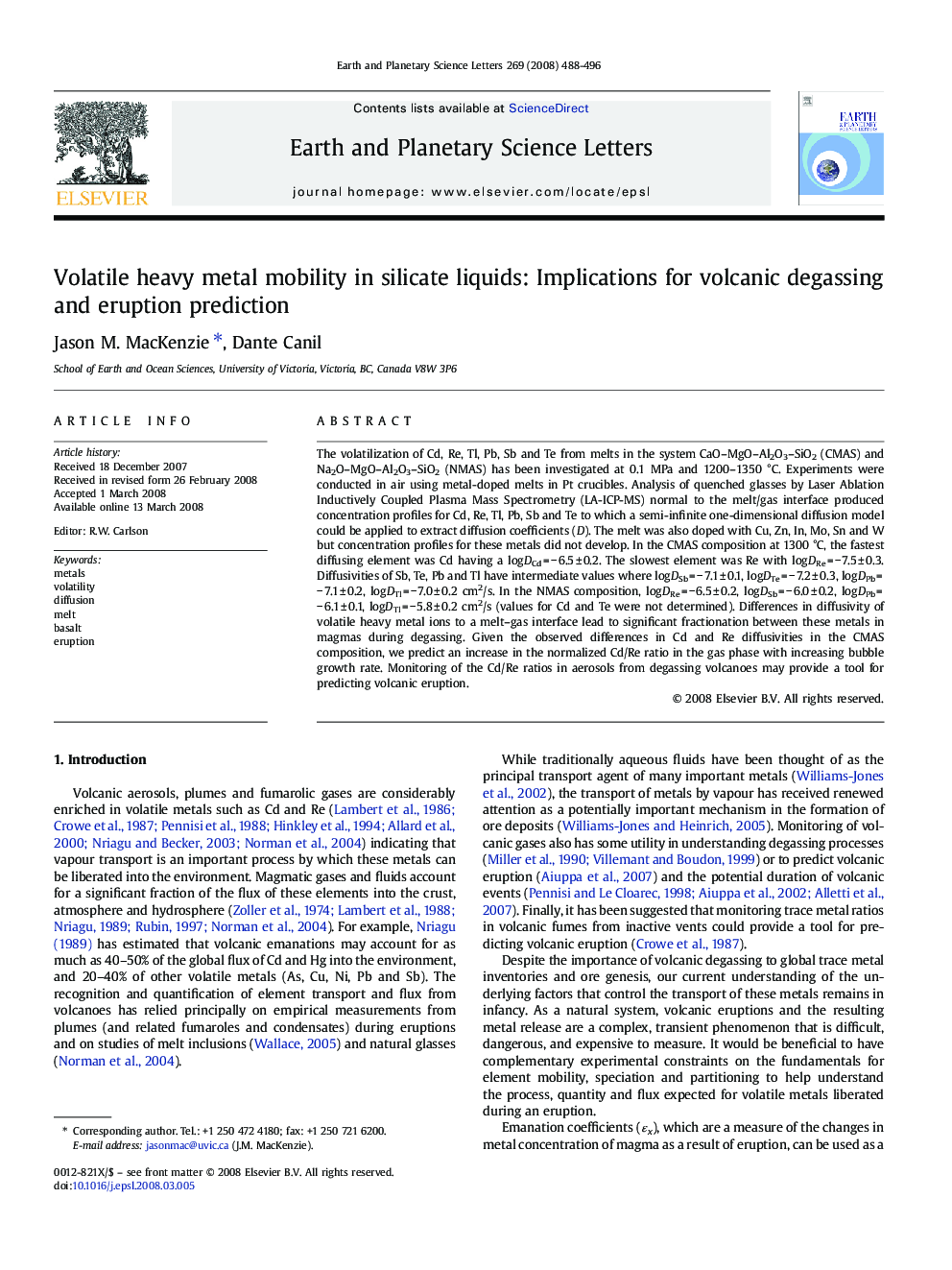| Article ID | Journal | Published Year | Pages | File Type |
|---|---|---|---|---|
| 4679787 | Earth and Planetary Science Letters | 2008 | 9 Pages |
The volatilization of Cd, Re, Tl, Pb, Sb and Te from melts in the system CaO–MgO–Al2O3–SiO2 (CMAS) and Na2O–MgO–Al2O3–SiO2 (NMAS) has been investigated at 0.1 MPa and 1200–1350 °C. Experiments were conducted in air using metal-doped melts in Pt crucibles. Analysis of quenched glasses by Laser Ablation Inductively Coupled Plasma Mass Spectrometry (LA-ICP-MS) normal to the melt/gas interface produced concentration profiles for Cd, Re, Tl, Pb, Sb and Te to which a semi-infinite one-dimensional diffusion model could be applied to extract diffusion coefficients (D). The melt was also doped with Cu, Zn, In, Mo, Sn and W but concentration profiles for these metals did not develop. In the CMAS composition at 1300 °C, the fastest diffusing element was Cd having a logDCd = − 6.5 ± 0.2. The slowest element was Re with logDRe = − 7.5 ± 0.3. Diffusivities of Sb, Te, Pb and Tl have intermediate values where logDSb = − 7.1 ± 0.1, logDTe = − 7.2 ± 0.3, logDPb = − 7.1 ± 0.2, logDTl = − 7.0 ± 0.2 cm2/s. In the NMAS composition, logDRe = − 6.5 ± 0.2, logDSb = − 6.0 ± 0.2, logDPb = − 6.1 ± 0.1, logDTl = − 5.8 ± 0.2 cm2/s (values for Cd and Te were not determined). Differences in diffusivity of volatile heavy metal ions to a melt–gas interface lead to significant fractionation between these metals in magmas during degassing. Given the observed differences in Cd and Re diffusivities in the CMAS composition, we predict an increase in the normalized Cd/Re ratio in the gas phase with increasing bubble growth rate. Monitoring of the Cd/Re ratios in aerosols from degassing volcanoes may provide a tool for predicting volcanic eruption.
